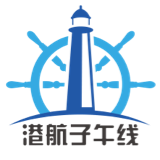More than 30 oil tankers line up to Chinese port!
Since March this year, international oil prices have entered the downward channel, and domestic enterprises have increased crude oil imports one after another. Since May, China take advantage of the sharp drop in oil prices and buy a large quantity of crude oil. At present, there are dozens of oil tankers moored off the coast of China, which require to wait for one month before entering and unloading.
According to Kpler of Bloomberg news and data tracking company, since June, the number of oil tankers parked along the coast of China has been increasing, with the total number approaching 200. After gradually relaxing the blockade measures in various places, China's market demand rebounded rapidly, and the amount of imported crude oil surged to an all-time high in May.

This highlights the large-scale procurement in China's oil refining industry. With the continuous influx of crude oil from the Middle East, Latin America, Russia and West Africa into China, the domestic port infrastructure and oil storage facilities are almost full. Imports of crude oil are expected to rise further this month. Kpler estimates that crude oil destined for China may reach 14 million barrels per day, with 20% higher than the record figure in May.
At present, at least 32 oil tankers are berthing off China's major ports, up from about 24 in early June. More than half of these tankers are VLCC, while the rest are smaller Avola tankers and Suez tankers. Their ports of arrival are such places as Qingdao, Rizhao, Yantai, Tianjin and Yingkou.
Due to the limited oil storage space on the shore, the time for ships entering the port to unload the cargo has also been prolonged. For example, a tanker arriving in May needs more than four weeks to unload all the cargo. In contrast, oil tankers usually just need almost 5 days to complete unloading before the outbreak.
There are continuous huge oil tankers arriving in Zhejiang Zhoushan Oil Unloading Terminal to unload cargo from day and night, where is one of China's important oil storage and transportation bases.
It is known that the total oil throughput of the six wharves at the Aoshan base reached 2.2 million tons in May by Sinochem Xingzhong Petroleum Transfer (Zhoushan) Co. LTD., with 150 vessels receiving and discharging, which break a new record.
According to statistics from Zhoushan Port Shipping and Port Administration Bureau of Zhejiang Province, there is a total of 5.8 million tons of crude oil loading and unloading completed in Zhoushan in May, up 27% from the same period last year.
According to statistics from the General Administration of Customs, China imported 47.969 million tons of crude oil in May, up 19.3% from 40.2 million tons in the same period last year. The monthly import volume was the highest in history, while the average import price of crude oil was 2567.4 yuan per ton reducing by 21.2%.
30多艘油轮排队靠港!中国“爆买”后油满为患
今年三月开始,国际油价进入下行通道,国内企业纷纷加大了原油进口。趁油价暴跌而大肆“爆买”之后,5月开始,这批原油陆续到达中国港口。由于缺乏储油空间。目前停泊在中国外海的油船数量多达数十艘,需要等待一个月才能进港卸货。
根据彭博资讯与数据追踪公司Kpler的资料,6月以来停在中国沿海的油船不断增加,总数接近200艘。在各地逐渐放宽封锁措施之后,中国市场需求迅速回升,5月进口的原油数量暴增至空前新高。
这种油满为患的状况凸显出中国炼油业大手笔采购。随着中东、拉美、俄罗斯和西非的原油不断涌入中国,国内港口基建和储油设施几乎快要填满。本月原油进口量有望进一步攀升,Kpler预估,运往中国的原油可能高达1400万桶/天,比5月创纪录的数字还要再高20%。
目前,至少有32艘油船正停泊在中国各大港口外海,高于6月初的约24艘。这些油船一半以上都是VLCC,其余则是规模较小的阿芙拉型油船和苏伊士型油船,抵达的港口包括青岛、日照、烟台、天津和营口等地。
由于岸上储油空间有限,船舶进港卸货所需的等待时间也因此延长,举例而言,一艘5月抵达的油船需要四周以上才能卸完所有货物。相比之下,疫情爆发前油船往往只需要约5天时间就能完成卸货。
作为我国重要的石油储运基地之一——浙江舟山卸油码头巨型油轮陆续到港昼夜不歇卸货。
据了解,中化兴中石油转运(舟山)有限公司5月份岙山基地的6个码头总体的油品吞吐量达到了220万吨,接卸的船只共有150艘次,创历史新高。
据浙江省舟山市港航和口岸管理局统计:5月份舟山共完成了580万吨原油接卸量,比去年同期增长了27%。
海关总署的统计数据显示:中国5月进口原油4796.9万吨,而去年同期只有4020万吨,增加了19.3%,单月进口量为历史最高水平,而原油的进口均价每吨2567.4元,下跌了21.2%。








